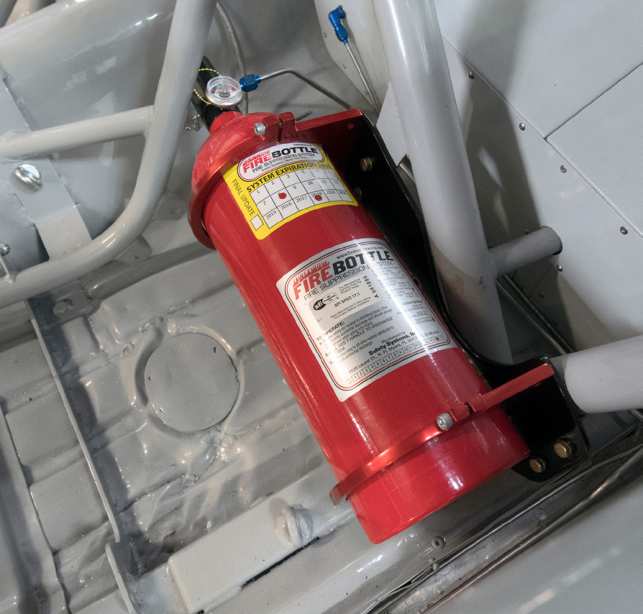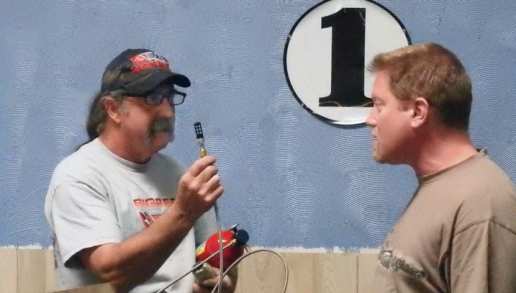FIRE SYSTEM

Cliff Whetstone, from G&J Aircraft, dropped in to talk to Mark and Dave about how the fire-suppression system zones were going to be laid out. Even though the system shipped with aluminum tubing, Cliff plumbed 1/4-inch stainless-steel hardlines for the whole fire system. He is the fitting and plumbing guru, so he knows how to do it all. The new system has manual/cable-operated spray nozzles (identified by straight cuts) and new automatic nozzles (identified by their series of drilled holes), which have completely pre-pressurized lines that are always waiting to be activated if the bulb in the nozzle bursts. The bulbs hold the plungers in place until heat makes them burst. The temperature they burst at is determined by the color in the fluid inside the glass bulb (located in the center of the nozzle). Since the engine compartment starts out hot, the bulb in that location is blue, with a much higher burst temperature.
The engine and passenger compartment zones have automatic heads and manual heads. During an accident, there’s no guarantee that the driver will be conscious, and, even if they are awake, they could be in a panic and forget to manually pull the fire cables, so automatic heads are important.
The bottle mounted in the center of the rollcage is for the trunk area and only has automatic heads. Since the prepressurized nozzles can’t be unscrewed for mounting, their mounting tabs are slotted. The manually operated heads could be disassembled, so their tabs only needed a small mounting hole. The heads were strategically placed around trouble spots and also around the driver
